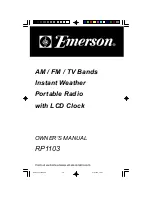
Setup/Installation
10
Connect the power adapter cable to the
bottom socket of the wall cradle. Connect
the other end to the power adapter and
plug into line power.
Connect the 3mm probe jack to the socket
located at the bottom of edge
EC
®.
Slide edge
EC
® into the wall cradle. Verify
the battery icon indicates charging.
Power Connection
Alternatively to using the cradle for
power, edge
EC
® can be powered by micro
USB socket at the top. Plug the 5 VDC
adapter into the power supply socket or by
connecting directly to a PC.
Note
: edge
EC
® is supplied with a
rechargeable
battery
inside,
which
provides about 8 hours of continuous use.
Whenever edge
EC
® is connected to the
power adapter or to a PC, the battery is
charging
Connect the 3 mm probe jack to the probe
input located on the bottom of edge
EC
®.
Make sure the probe is completely
connected.
If the probe is recognized,
“CONNECTING” message is displayed along
with sensor model.
If the probe is not connected or not
recognized, “NO PROBE” message is
displayed.
Setting Up
edge
EC
®
Electrode
& Probe
Connections
Operational Guide
31
Note
:
•
These are for determining salinity as they relate to general oceanographic
use.
•
Practical salinity and the Natural Seawater require a conductivity
calibration.
•
NaCl % requires a calibration in HI 70371 standard.
PSU - Practical Salinity Units
The practical salinity (S) of seawater relates the ratio of electrical conductivity
of a normal seawater sample at 15 ºC and 1 atmosphere to a potassium chloride
solution (KCl) with a mass of 32.4356 g/Kg water at the same temperature and
pressure.
Under these conditions the ratio is equal to 1, and S=35. The practical salinity
scale may be applied to values to through 42 PSU at temperatures between -2
to 35 ºC.
According to the defi nition, salinity of a sample in PSU (practical salinity units) is
calculated using the following formula:
NaCl % Percent Scale
The NaCl % scale is an older salinity scale used for seawater salinity. In this scale
100% salinity is equivalent to roughly 10% solids. High percentages were made
by evaporation. To display NaCl in % units, enter SETUP and select NaCl% unit.
Press the RANGE key until “NaCl%” is displayed on the LCD. The instrument will
display the NaCl% reading on the fi rst LCD line and the temperature reading on
the second LCD line.
Salinity
Measurements
f(t)=
T-15
1 + 0.0162•(t-15)
a
0
= 0.008
a
1
= -0.1692
a
2
= 25.3851
a
3
= 14.0941
a
4
= -7.0261
a
5
= 2.7081
b
0
= 0.0005
b
1
= -0.0056
b
2
= -0.0066
b
3
= -0.0375
b
4
= 0.0636
b
5
= -0.01442
c
0
= 0.008
c
1
= 0.0005
X = 400R
T
Y = 100R
T
R
T
- ratio of sample conductivity to standard conductivity at Temp =(T)
C
T
(sample) - uncompensated conductivity at T ºC;
C(35,15) =42.914
µ
S/cm - the corresponding conductivity of KCI solution
containing a mass of 32.4356 g KCl/1 Kg solution
r
T
- Temperature compensation polynomial






































